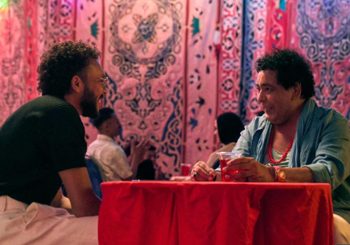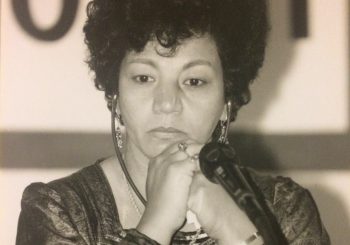Al Naddaha (the Siren), Abu Regl Masloukha (the Man with the Flayed Leg), and Ummena Al Ghula (Mother Ghoul) are three folktales that have for years captured the imagination of Egyptians young and old. Often, though less now in the most recent generations, parents use these tales to instill discipline by scaring children – but the vivid and gruesome imagery often leaves a lasting mark.
These legends are a fascinating aspect of Egyptian culture, passed down through the generations, yet their origins have always remained shrouded in mystery. How these tales became woven into the Egyptian cultural fabric remains a question for anthropologists to answer. However, there are several compelling theories.
Here are the tales and some of the theories that attempt to explain their origin.
Al Neddaha (The Siren)

The legend of Al Naddaha, literally translating to, “the woman who calls,” which emerged in rural Egypt, is not limited to one specific region. Just as its origins in Egypt remain unknown, the reasons for its widespread presence across the world with varying names and narratives are also a mystery. However, all versions of the legend concur that its appeal lies in the concept of beauty, and the notion that pursuing one’s desires will ultimately result in downfall.
Similar to the infamous sirens of the Greek Odyssey, Al Naddaha is a monster that dwells close to the River Nile’s banks, singing an irresistible song that holds sway over the hearts of men. Stories of this nocturnal beast are well-known in rural Egypt, where Al Naddaha takes on the shape of a beautiful woman who lures men to their doom. In most tales, these men do not get close enough to the Nile to see what Al Naddaha looks like before she escapes. However, in rare cases, they catch a glimpse of her.
The monster is described as an exceptionally attractive, tall, and slender woman with long flowing hair down her back. She typically stands very close to the riverbank, wearing a loose, long, and semi-transparent dress. Some accounts even describe her as having a semi-transparent body. Her voice is gentle and soothing, yet strangely loud.
Al Naddaha may summon men from their homes along the Nile and its canals, and these men eagerly attempt to answer her call. In other stories, the afflicted man does not immediately follow her but experiences a period of anxious distraction for several nights before eventually departing late at night. Local belief holds that a man called by Al Naddaha is doomed, and finding a cure is often considered impossible.
Egyptian writer Ahmed Khaled Tawfik immortalized Al Naddaha in ‘The Legend of Al Naddaha,’ a short story that was later adapted into an episode on the Netflix series Paranormal.
Abu Regl Masloukha

In Egyptian folk tales, Abu Regl Masloukha, or in English, “the man with the flayed leg,” is described as a man who is severely disfigured, with his left foot completely mangled and his right foot partially deformed.
Abu Regl Maslokha would often kidnap or punish young children – a convenience that Egyptian parents have taken advantage of throughout the generations. It is said that this monster only came at night and targeted children who did not obey their parents’ orders, those who stayed up late, refused to eat their meals, or did not drink their milk.
Although the exact origin is not well-documented, some people online have theorized that Abu Regl Maslokha, is a description of an ancient Egyptian deity named Bes.
Bes was the god of joy and happiness in ancient Egypt and the protector of children in the Roman and Greek eras. In most depictions, Bes is portrayed as a creature of short stature. His distinctive form became more apparent during the Middle Kingdom, but the earliest recognized representation of him dates back to the Old Kingdom. In this era, the deity was depicted wearing a lion’s skin as a mask.
Bes had a comical yet frightening appearance, representing a blend of human and animal traits.
Ummena Al Ghula

The legend of Ummena Al Ghula (Mother Ghoul) tells of a hideous creature that comes to feed on children at night. Like the story of Abu Regl Maslokha, hers was used to scare children into obeying their parents.
The origin of this folktale is quite convoluted, with two main hypotheses. The first suggests that the legend Umna Al Ghula is based on Sakhmet, the ancient Egyptian goddess of the desert, war, and plagues.
The second links the terrifying female entity to Lilith, the first wife of Adam and the primordial she-demon, according to Judaic heritage.
Lilith is depicted in numerous forms in rabbinic literature. She is sometimes depicted as the mother of demonic children born after her separation from Adam, or as Adam’s first wife. Lilith’s tale takes a unique turn when she refuses to be Adam’s submissive wife and leaves him. Three angels were dispatched in an attempt to bring her back, but their efforts proved futile.
In Arab folktales, this shape-shifting desert creature is still colloquially known as Um Al Subyan, or “the mother of boys” in English, and in Egypt, the name became Ummena Al Ghula, or in English “our mother the ghoul”.
Subscribe to the Egyptian Streets’ weekly newsletter! Catch up on the latest news, arts & culture headlines, exclusive features and more stories that matter, delivered straight to your inbox by clicking here.







Comments (0)